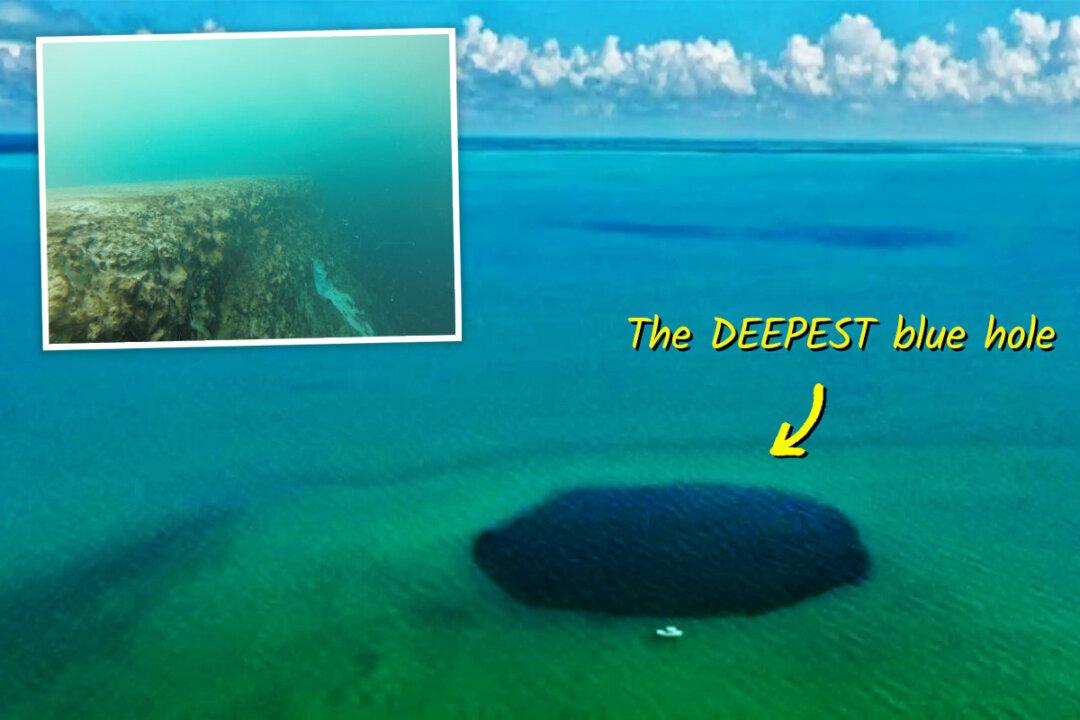The “deepest-known” under-ocean sinkhole on the planet has been found—and it’s so deep that researchers haven’t yet reached the bottom.
Dubbed a “blue hole” or “karst cave” by scientists, the vertical marine cavern was explored at length during a scuba-diving expedition to Chetumal Bay, off the coast of Mexico’s Yucatan Peninsula, last December.






